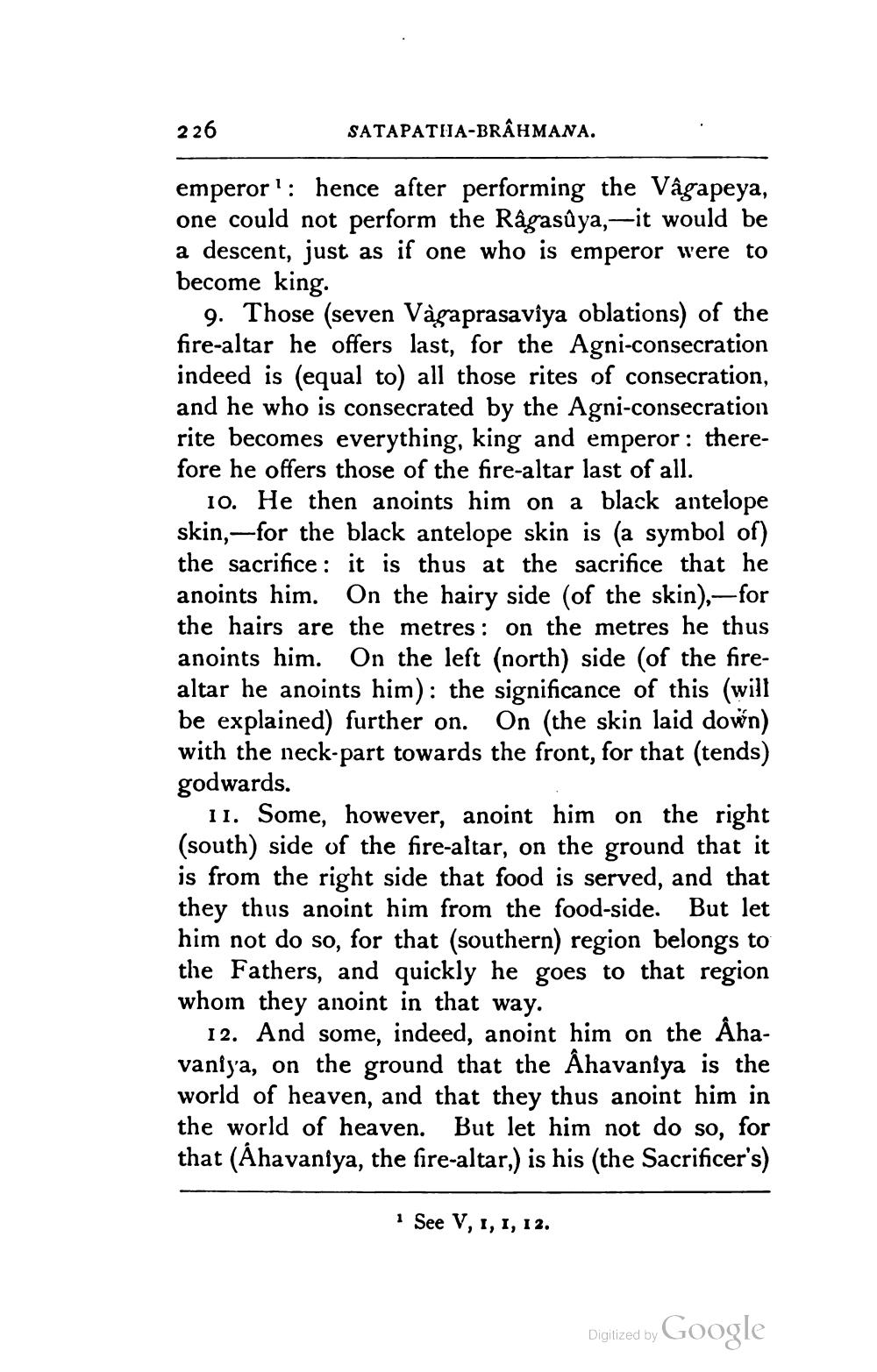________________
226
SATAPATHA-BRÂHMANA.
emperor': hence after performing the Vâgapeya, one could not perform the Rågasûya,,it would be a descent, just as if one who is emperor were to become king.
9. Those (seven Vågaprasaviya oblations) of the fire-altar he offers last, for the Agni-consecration indeed is (equal to all those rites of consecration, and he who is consecrated by the Agni-consecration rite becomes everything, king and emperor : therefore he offers those of the fire-altar last of all.
10. He then anoints him on a black antelope skin,--for the black antelope skin is (a symbol of) the sacrifice: it is thus at the sacrifice that he anoints him. On the hairy side (of the skin),- for the hairs are the metres : on the metres he thus anoints him. On the left (north) side of the firealtar he anoints him): the significance of this (will be explained) further on. On (the skin laid down) with the neck-part towards the front, for that (tends) godwards.
11. Some, however, anoint him on the right (south) side of the fire-altar, on the ground that it is from the right side that food is served, and that they thus anoint him from the food-side. But let him not do so, for that (southern) region belongs to the Fathers, and quickly he goes to that region whom they anoint in that way.
12. And some, indeed, anoint him on the Åhavaniya, on the ground that the Åhavaniya is the world of heaven, and that they thus anoint him in the world of heaven. But let him not do so, for that (Ahavaniya, the fire-altar,) is his (the Sacrificer's)
See V, 1, 1, 12.
Digitized by Google




